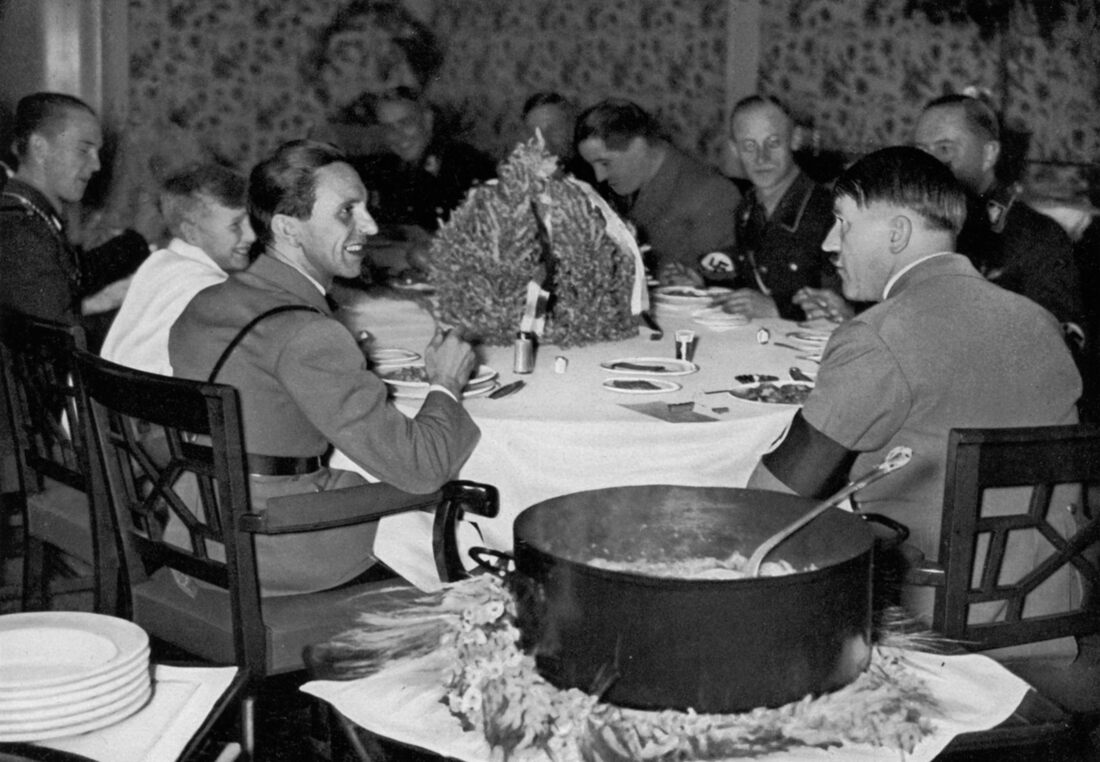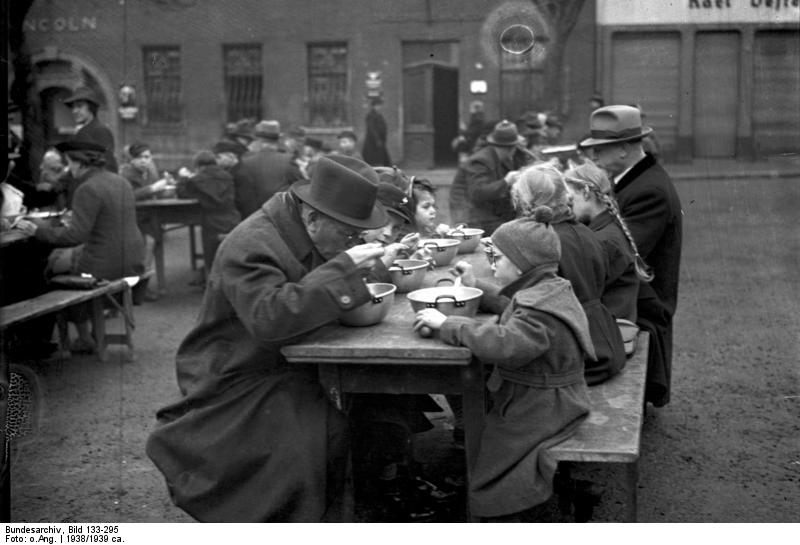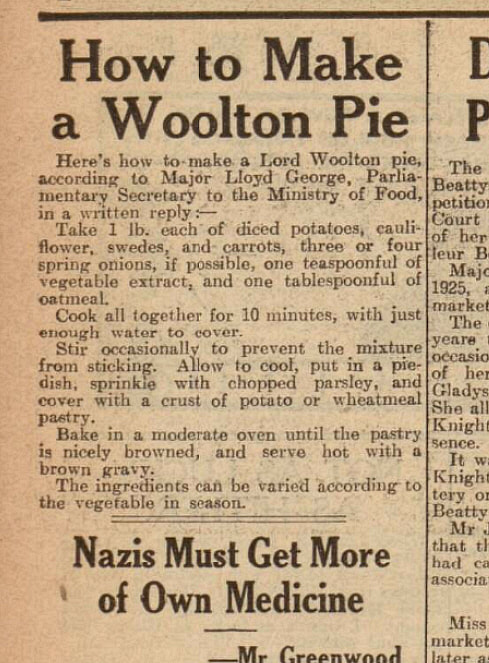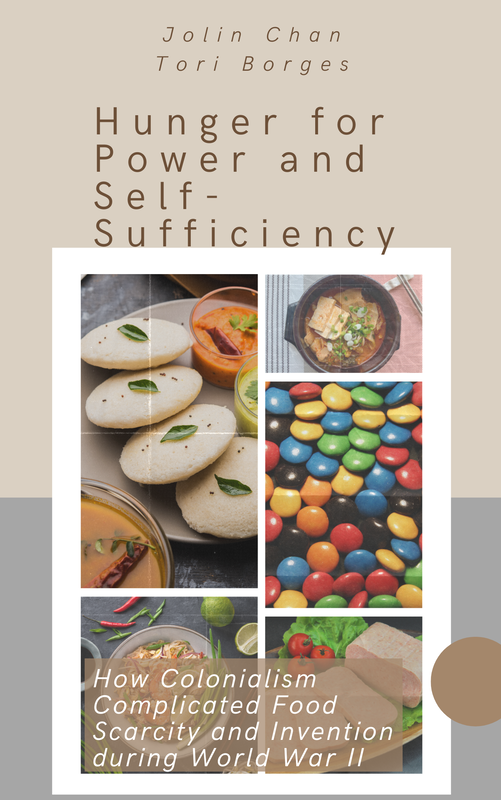- Home
- Stories
-
Internship
- Summer 2024 Internship
- Summer 2023 Internship
- Fall 2022 Internship
- Summer 2022 Internship
- Summer 2021 Internship
- Fall 2020- Spring 2021 Internship
- Summer 2020 Internship
- Fall 2019 Internship
- Summer 2019 Internship >
- School Year 2018-2019 Internship
- Summer 2018 Internship >
- Fall 2017 Internship
- Summer 2017 Internship >
- Books
- Archives
-
Resource Page
-
Supplementary Research Guides
>
- Unit 731 - Guide >
-
Philippines' Resistance - Guide
>
- Philippines World War II Timeline
- The Japanese Invasion & Conquest of the Philippines
- Bataan Death March
- Formation of Underground Philippines Resistance
- Supplies of the Guerrilla Fighters
- The Hukbalahap
- Hunter's ROTC
- Marking's Guerrillas
- United States Army Forces in the Philippines of Northern Luzon (USAFIP-NL)
- The Aetas
- Chinese and Filipino-Chinese Nationalist Guerrilla Units
- The Female Faces of the Philippine Guerrillas
- Rising Sun Flag - Guide >
- Pinay Guerrilleras - Guide >
- Fall of Singapore - Guide >
- Three Years and Eight Months - Guide >
- Siamese Sovereignty - Guide >
- The Khabarovsk War Crimes Trial - Guide >
- Unit 731 Cover-up : The Operation Paperclip of the East - Guide >
- Marutas of Unit 731 - Guide >
- Prince Konoe Memoir - Guide >
- Competing Empires in Burma - Guide >
- Battle of Shanghai - Guide >
- Ishi Shiro - Guide >
- Taiwan The Israel of the East - Guide >
- Seeking Justice for Biological Warfare Victims of Unit 731 - Guide >
- Rice and Revolution - Guide >
- Clash of Empires - Guide >
-
Hunger for Power and Self-SufficiencyI - Guide
>
- The Influence of War Rations on Post-War Culinary Transformations
- How World War II Complicated Food Scarcity and Invention
- American Military Innovations
- Government-Sponsored Food Inventions in Europe during World War II
- Feeding the Army: The Adaptation of Japanese Military Cuisine and Its Impact on the Philippines
- Mixed Dishes: Culinary Innovations Driven by Necessity and Food Scarcity
-
Denial A Quick Look of History of Comfort Women and Present Days’ Complication - Guide
>
- The Comfort Women System and the Fight for Recognition
- The Role of Activism and International Pressure
- The Controversy over Japanese History Textbooks
- The Sonyŏsang Statue and the Symbolism of Public Memorials
- Activism and Support from Japanese Citizens
- The Future of Comfort Women Memorials and Education
- Echoes of Empire: The Power of Japanese Propaganda - Guide >
- Lesson Plans >
-
Supplementary Research Guides
>
Eintopf Stew: The Nazi-Propagandized Dish That Became a Wartime Staple in Germany
Food scarcity during World War II varied for countries such as the United Kingdom and Germany in comparison to their colonial spaces. As imperialist powerhouses, they possessed superior resources and experience in mobilizing for war. Although they were on opposing sides of the war, they shared similarities in rationing techniques, types of food rationed, and the role of their governments. German and British civilians experienced food insecurity, but their governments prioritized them, preventing large-scale hunger.
The nations in the European theater followed different timelines, leading to varied approaches to rationing. Germany, as the primary aggressor in the European theater, began preparing for war with rationing even before World War II started. Peanuts and bananas disappeared from stores before the official implementation of rationing, and the outbreak of war led to the restriction of all food types. The United Kingdom had to react rather than prepare, initiating gasoline rationing and gradually adding more restrictions, primarily on animal products and imports, such as meat, cheese, and tea. Having recently experienced total warfare during World War I, the imperialist countries held an advantage in feeding their populations and knew that unconventional solutions were necessary.
The nations in the European theater followed different timelines, leading to varied approaches to rationing. Germany, as the primary aggressor in the European theater, began preparing for war with rationing even before World War II started. Peanuts and bananas disappeared from stores before the official implementation of rationing, and the outbreak of war led to the restriction of all food types. The United Kingdom had to react rather than prepare, initiating gasoline rationing and gradually adding more restrictions, primarily on animal products and imports, such as meat, cheese, and tea. Having recently experienced total warfare during World War I, the imperialist countries held an advantage in feeding their populations and knew that unconventional solutions were necessary.
Even before the days of total warfare, food scarcity prompted cooking innovation. The circumstances of World War II exacerbated this scarcity, but the struggle to sustain life has always defined human history. The practice of boiling water for cooking dates back as early as 50,000 years ago, during the Upper Paleolithic period. The exact origins of dishes such as stews and soups are difficult to pinpoint, but wet cooking techniques evolved as humans advanced. Over time, dishes like stews became associated with distinct cultures and specific ingredients from available resources. The German dish Eintopf followed this trend and underwent a cultural transformation due to the war. The Third Reich in Germany used the popularity of this dish as propaganda to persuade its people to support the war and their fascist values.
Eintopf, meaning "one-pot," was invented prior to World War II in Nazi Germany as part of their propaganda effort and war preparation. Nazi propaganda aimed to indoctrinate the German people and secure their commitment to the government. One of the central aspects was Volksgemeinschaft, or "the community before the individual." The creation of Eintopf sought to convince the German people to sacrifice for the greater good, which in Hitler's vision, was the 'master' race ruling. During the 1930s, in Germany, the Nazis launched a campaign where Germans would eat one simple dish for Sunday meals and donate the rest. Rising to power during the Great Depression, the Nazis were tasked with improving Germany's position, and this social service campaign encouraged Germans to sacrifice some comfort for the greater good of their country. Although the war had not yet broken out during its invention and implementation, the Nazi propaganda effort was part of psychological war mobilization, including the Eintopfsonntag campaign.
Eintopf, meaning "one-pot," was invented prior to World War II in Nazi Germany as part of their propaganda effort and war preparation. Nazi propaganda aimed to indoctrinate the German people and secure their commitment to the government. One of the central aspects was Volksgemeinschaft, or "the community before the individual." The creation of Eintopf sought to convince the German people to sacrifice for the greater good, which in Hitler's vision, was the 'master' race ruling. During the 1930s, in Germany, the Nazis launched a campaign where Germans would eat one simple dish for Sunday meals and donate the rest. Rising to power during the Great Depression, the Nazis were tasked with improving Germany's position, and this social service campaign encouraged Germans to sacrifice some comfort for the greater good of their country. Although the war had not yet broken out during its invention and implementation, the Nazi propaganda effort was part of psychological war mobilization, including the Eintopfsonntag campaign.
Eintopf stews did not adhere to a single recipe; instead, they were made with inexpensive ingredients and typically served hot. Common ingredients included root vegetables, dried fruit, and pork native to Germany, reinforcing ideas of racial unity through a shared diet. Although Eintopf was not invented during the war, it transitioned into wartime practice. It was adopted during World War II for rationing purposes and waned as the war continued.
Wartime Ingenuity: Woolton Pie, a Nutritious Solution During Britain's Food Scarcity
In addition to stews, various European dishes emerged in response to food scarcity. One such dish was Woolton Pie (Figure 6), which was far from the first savory hodgepodge pie concocted in Europe. Centuries earlier, shepherd's pie originated in Scotland and Northern England, with mashed potatoes and lamb believed to be a result of housewives combining leftovers into a single meal. During times of food scarcity, it is common for cultures to create dishes using food scraps, based on local and available key ingredients. In the case of the United Kingdom, the creation of Woolton pie and its specific ingredients depended on which foods were scarce during the war.
Food scarcity in the United Kingdom led to government-sponsored dishes designed to address nutritional concerns. As with other countries involved in this total war, mobilization meant that the British diet would undergo significant changes, as all resources were directed towards the war effort, particularly with the elimination of meat. Rationing officially began in 1940 and would continue until 1954. For almost a decade and a half, everyday citizens felt the impact of wartime rationing as they sought nourishment in inventive ways. Vitamin C from lemons was substituted with 'turnip water,' and some obtained their protein from eels and sheep's head. Despite wartime limitations, the British government acknowledged these hardships and devised meals to alleviate the strain.
Food scarcity in the United Kingdom led to government-sponsored dishes designed to address nutritional concerns. As with other countries involved in this total war, mobilization meant that the British diet would undergo significant changes, as all resources were directed towards the war effort, particularly with the elimination of meat. Rationing officially began in 1940 and would continue until 1954. For almost a decade and a half, everyday citizens felt the impact of wartime rationing as they sought nourishment in inventive ways. Vitamin C from lemons was substituted with 'turnip water,' and some obtained their protein from eels and sheep's head. Despite wartime limitations, the British government acknowledged these hardships and devised meals to alleviate the strain.
The vegetable-focused Woolton Pie was one such dish. Invented in 1941 and named after Lord Woolton—Frederick Marquis, the Head of the Ministry of Food—this dish addressed nutritional concerns arising from wartime rationing. Lord Woolton did not prioritize the taste during his tenure, as his primary goal was to prevent the United Kingdom from starving. Woolton Pie was said to have sat "like cement upon the chest." Although Lord Woolton focused on the nutritional value of rationed meals for the British people, they inevitably had to sacrifice taste and genuine satisfaction.
Nevertheless, the dish did possess some nutritional value, primarily due to its inclusion of vegetables. Variations of the dish exist, depending on which vegetables are in season. The official recipe lists potatoes, cauliflower, rutabaga, carrots, and onions as the main ingredients for the filling, with a crust of potato or pastry served alongside gravy. Although Lord Woolton did not personally invent this dish, he actively promoted it in his position. The actual inventor was the Maitre-chef at the Savoy Hotel in London, Francois Latry. Woolton Pie was not a product of self-sufficiency but rather a collaborative effort between government bodies and professional chefs to provide sustenance for their starving population. Today, Woolton Pie is seen not as a regional cuisine of the United Kingdom but simply as a wartime recipe. After World War II, the dish was neither necessary nor flavorful enough to maintain its popularity in British cuisine.
Nevertheless, the dish did possess some nutritional value, primarily due to its inclusion of vegetables. Variations of the dish exist, depending on which vegetables are in season. The official recipe lists potatoes, cauliflower, rutabaga, carrots, and onions as the main ingredients for the filling, with a crust of potato or pastry served alongside gravy. Although Lord Woolton did not personally invent this dish, he actively promoted it in his position. The actual inventor was the Maitre-chef at the Savoy Hotel in London, Francois Latry. Woolton Pie was not a product of self-sufficiency but rather a collaborative effort between government bodies and professional chefs to provide sustenance for their starving population. Today, Woolton Pie is seen not as a regional cuisine of the United Kingdom but simply as a wartime recipe. After World War II, the dish was neither necessary nor flavorful enough to maintain its popularity in British cuisine.
Related Book
|
|
Hunger for Power and Self-Sufficiency: How Colonialism Complicated Food Scarcity and Invention during World War IIDiscover the hidden food history of World War II that mainstream narratives have overlooked. While the war conjures images of genocide and ceaseless violence, it's important to address the histories of colonized peoples during this time. Learn how contrasting food inventions between colonial powers and their holdings during World War II shed light on these marginalized histories.
Explore how America's emergence as a world power during World War II led to the introduction of iconic food items like SPAM and M&Ms. These food inventions profoundly impacted the military and were later incorporated into some American dishes after the war. Discover how the relationship between entrepreneurs and the American military was vital to food invention, and how food science led to popular American snack foods. Find out how the American military introduced their own food inventions to subjugated places, spurring more food innovation in places they had colonized and waged war. Learn how SPAM became a key part of history during the war in places like Hawaii, Korea, and Okinawa, and how it continues to sustain them today. Discover how Europe's food invention was less connected to the military, with homefront food invention being government sponsored. Explore how citizens of these powers were better off during times of extreme food shortages and rationing than others. Explore the contrasting food history of the Bengal Famine, where millions of deaths occurred due to the British colony's whims. Discover how food invention was still possible during these times, showing perseverance, and how similar themes emerged in other parts of Asia. Learn how colonized people showed ingenuity in the face of starvation and how the differences in how colonizing and colonized spaces dealt with food insecurity during World War II reveal the glaring inequality in homefront experiences. |
|
Pacific Atrocities Education
730 Commercial Street San Francisco, CA 94108 415-988-9889 |
Copyright © 2021 Pacific Atrocities Education.
We are a registered 501 (c)(3) charity. |
- Home
- Stories
-
Internship
- Summer 2024 Internship
- Summer 2023 Internship
- Fall 2022 Internship
- Summer 2022 Internship
- Summer 2021 Internship
- Fall 2020- Spring 2021 Internship
- Summer 2020 Internship
- Fall 2019 Internship
- Summer 2019 Internship >
- School Year 2018-2019 Internship
- Summer 2018 Internship >
- Fall 2017 Internship
- Summer 2017 Internship >
- Books
- Archives
-
Resource Page
-
Supplementary Research Guides
>
- Unit 731 - Guide >
-
Philippines' Resistance - Guide
>
- Philippines World War II Timeline
- The Japanese Invasion & Conquest of the Philippines
- Bataan Death March
- Formation of Underground Philippines Resistance
- Supplies of the Guerrilla Fighters
- The Hukbalahap
- Hunter's ROTC
- Marking's Guerrillas
- United States Army Forces in the Philippines of Northern Luzon (USAFIP-NL)
- The Aetas
- Chinese and Filipino-Chinese Nationalist Guerrilla Units
- The Female Faces of the Philippine Guerrillas
- Rising Sun Flag - Guide >
- Pinay Guerrilleras - Guide >
- Fall of Singapore - Guide >
- Three Years and Eight Months - Guide >
- Siamese Sovereignty - Guide >
- The Khabarovsk War Crimes Trial - Guide >
- Unit 731 Cover-up : The Operation Paperclip of the East - Guide >
- Marutas of Unit 731 - Guide >
- Prince Konoe Memoir - Guide >
- Competing Empires in Burma - Guide >
- Battle of Shanghai - Guide >
- Ishi Shiro - Guide >
- Taiwan The Israel of the East - Guide >
- Seeking Justice for Biological Warfare Victims of Unit 731 - Guide >
- Rice and Revolution - Guide >
- Clash of Empires - Guide >
-
Hunger for Power and Self-SufficiencyI - Guide
>
- The Influence of War Rations on Post-War Culinary Transformations
- How World War II Complicated Food Scarcity and Invention
- American Military Innovations
- Government-Sponsored Food Inventions in Europe during World War II
- Feeding the Army: The Adaptation of Japanese Military Cuisine and Its Impact on the Philippines
- Mixed Dishes: Culinary Innovations Driven by Necessity and Food Scarcity
-
Denial A Quick Look of History of Comfort Women and Present Days’ Complication - Guide
>
- The Comfort Women System and the Fight for Recognition
- The Role of Activism and International Pressure
- The Controversy over Japanese History Textbooks
- The Sonyŏsang Statue and the Symbolism of Public Memorials
- Activism and Support from Japanese Citizens
- The Future of Comfort Women Memorials and Education
- Echoes of Empire: The Power of Japanese Propaganda - Guide >
- Lesson Plans >
-
Supplementary Research Guides
>



